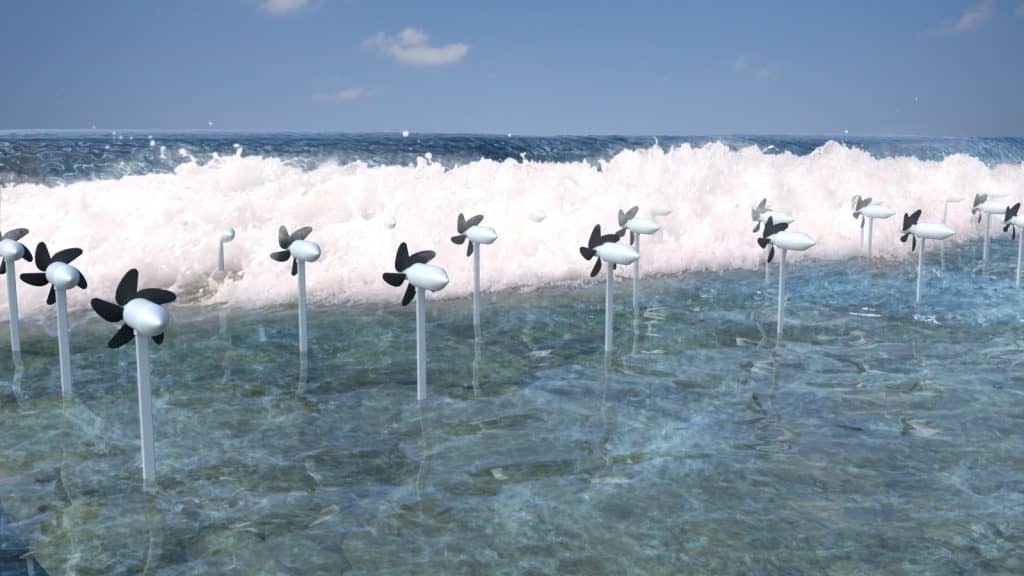The world needs a lot of energy to thrive. We wish to convert all sorts of energy available to us into electrical energy as it is one of the most reliable forms of energy. If you love your planet even a bit, you would wish to consume renewable energy and nothing else. A team of scientists from the Okinawa Institute of Science and Technology has developed a unique kind of turbines to harvest electrical power from crashing waves.
The system developed by the OIST scientists serves two purposes; convert wave energy into electrical energy and dissipate the impact of waves to protect the coastlines.
Coastlines are gifted with enormous amounts of wind energy. In all parts of the world, scientists are working to figure out the ways of extracting this power. While it is a blessing if put to appropriate use, the same wave energy can be a disaster as it corrodes the coastline along the populated coastal areas. The “Sea Horse” project was initiated by Professor Tsumoru Shintake and the Quantum Wave Microscopy Unit at OIST. This project had a mission to extract wave power and reduce the erosion along the Japanese coastline.
The project began with submerged turbines to convert the kinetic energy of the natural currents into electricity. That energy is delivered by cables to inland areas as well. Shintake noticed a considerable number of tetrapods along the coastline. Tetrapods are triangular structures that weaken the force of waves to protect a shore from erosion.
Professor Shintake explains,
“Particularly in Japan, if you go around the beach you’ll find many tetrapods. Surprisingly, 30 percent of the seashore in mainland Japan is covered with tetrapods and wave breakers.”
The wave breakers are there anyway, so Shintake and his team decided to put them to better use. They intend to attach turbines next to the tetrapod for a greater benefit.
This energy harvested from the waves is not a small amount that can power only one little house at the shore.
“Using just 1 percent of the seashore of mainland Japan can generate about 10 gigawatts of energy, which is equivalent to 10 nuclear power plants,” Shintake explained.
The Wave Energy Converter (WEC) project was brought to life with each turbine positioned to experience the ideal wave conditions near coral reef systems and the tetrapods. Mooring cables anchor the turbines to the sea. This is done to keep them at enough height for maximum energy conversion. The turbines went through three years of testing and trials. The first step of this amazing project is just completed. The next commercial experiment involves installation of 0.35-meter diameter half-scale model turbines on the shore.
The blade design of the turbines is inspired from dolphins. The purpose was to make them robust enough to withstand massive amounts of force, even that of a typhoon. The blades are not brittle but cartilage-like, similar to that of a dolphin’s fin. Great amounts of force will cause the blades to bend and release stress instead of breaking down, like a flower in the wind. “The stem of a flower bends back against the wind,” and so will the turbines, as Shintake says.
“I’m imagining the planet two hundred years later. I hope these [turbines] will be working hard quietly, and nicely, on each beach on which they have been installed,” Shintake said.
The project brightens our hopes of a better future. What do you think?

